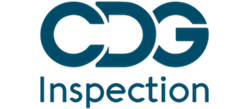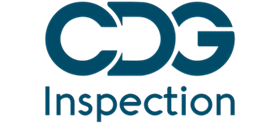Introduction:
In the world of pharmaceuticals, the European Union Good Manufacturing Practices (EUGMP) guidelines are a cornerstone for ensuring the quality, safety, and efficacy of medicinal products. These guidelines provide a framework for pharmaceutical manufacturers to follow, emphasizing the importance of preventing microbial contamination during the production process. CDG Inspection Limited, as a prominent player in the field of pharmaceutical inspections and compliance, plays a vital role in helping pharmaceutical companies adhere to EUGMP regulations.
This comprehensive essay aims to explore the significance of preventing microbial contamination in EUGMP production, the measures taken by CDG Inspection Limited, and the broader implications of maintaining high standards in pharmaceutical manufacturing. The essay will delve into various aspects of microbial contamination prevention, including regulatory requirements, cleanroom design and maintenance, personnel training, and the role of technology.
Understanding Microbial Contamination
Microbial Contamination in Pharmaceutical Production
Microbial contamination is a persistent threat in pharmaceutical production, posing risks to patient safety and product quality. Microorganisms such as bacteria, fungi, and viruses can compromise the sterility and stability of medicinal products, potentially leading to adverse health effects in patients. Therefore, it is imperative for pharmaceutical manufacturers to implement rigorous measures to prevent and control microbial contamination.
Regulatory Requirements for Microbial Contamination Prevention
The European Medicines Agency (EMA) sets stringent regulatory requirements for pharmaceutical companies under the EUGMP framework. These regulations mandate that manufacturers establish and maintain a state of control to prevent contamination throughout the production process. Compliance with these regulations is essential for obtaining and maintaining marketing authorizations for medicinal products in the European Union.
CDG Inspection Limited and its Role
Overview of CDG Inspection Limited
CDG Inspection Limited is a renowned company specializing in pharmaceutical inspections and compliance services. With a team of experts well-versed in international pharmaceutical regulations, CDG Inspection Limited assists pharmaceutical companies in achieving and maintaining compliance with EUGMP and other regulatory standards. One of its primary areas of expertise lies in microbial contamination prevention.
The Role of CDG Inspection Limited in Microbial Contamination Prevention
CDG Inspection Limited plays a multifaceted role in the prevention of microbial contamination in EUGMP production. Its services encompass inspection, auditing, consultation, and training, all of which contribute to enhancing the quality and safety of pharmaceutical products. The company’s approach to microbial contamination prevention involves a combination of strategies and best practices that align with regulatory requirements.
Preventing Microbial Contamination in EUGMP Production
Cleanroom Design and Maintenance
Cleanrooms are central to preventing microbial contamination in pharmaceutical production. CDG Inspection Limited employs a comprehensive approach to cleanroom design and maintenance, considering factors such as airflow control, filtration systems, and surface materials to create controlled environments with minimal contamination risk. The company ensures that cleanrooms are designed and constructed to meet the stringent requirements outlined in EUGMP guidelines.
Air Quality and Filtration Systems
Controlling the quality of air within cleanrooms is crucial for preventing microbial contamination. CDG Inspection Limited assists pharmaceutical companies in selecting and maintaining high-efficiency particulate air (HEPA) and ultra-low penetration air (ULPA) filters to remove airborne contaminants. Additionally, the company employs advanced monitoring systems to continuously assess air quality and identify potential issues before they escalate.
Personnel Training and Hygiene
Personnel play a critical role in microbial contamination prevention. CDG Inspection Limited offers comprehensive training programs to ensure that pharmaceutical employees understand the importance of hygiene, aseptic techniques, and proper gowning procedures. Training programs also cover contamination risk awareness and containment protocols, empowering staff to act proactively in preventing microbial contamination.
Sterilization Processes
Sterilization is a key step in pharmaceutical production to eliminate microbial contaminants from equipment, surfaces, and products. CDG Inspection Limited helps pharmaceutical companies implement and validate sterilization processes, ensuring that they conform to EUGMP guidelines. This includes validation of autoclaves, depyrogenation ovens, and other sterilization equipment to guarantee their efficacy in microbial reduction.
Environmental Monitoring
Continuous environmental monitoring is essential for early detection of potential sources of microbial contamination. CDG Inspection Limited utilizes state-of-the-art monitoring systems that provide real-time data on temperature, humidity, airborne particulates, and microbial counts. These systems enable prompt corrective actions and minimize contamination risks.
Material Handling and Storage
Contaminated materials or storage conditions can introduce microbial contaminants into the production process. CDG Inspection Limited advises pharmaceutical companies on best practices for material handling and storage, including the use of sealed containers, controlled temperature environments, and monitoring systems to prevent contamination during the transportation and warehousing of raw materials and finished products.
Water Systems
Water plays a critical role in pharmaceutical manufacturing, and its quality is vital to prevent microbial contamination. CDG Inspection Limited assists companies in designing, validating, and maintaining water purification systems that meet EUGMP standards. This includes ensuring the absence of microbial contamination in purified water, water-for-injection (WFI), and other critical water systems.
Product Packaging
Microbial contamination can occur during the final stages of production, including packaging. CDG Inspection Limited collaborates with pharmaceutical companies to establish stringent packaging procedures that minimize the risk of contamination. This includes sterile packaging materials, cleanroom environments for packaging processes, and quality control measures to verify the integrity of sealed packages.
Advanced Technologies in Microbial Contamination Prevention
Rapid Microbial Detection
Traditional microbial testing methods can be time-consuming, delaying production and product release. CDG Inspection Limited advocates the use of rapid microbial detection technologies that provide real-time results. These technologies, such as polymerase chain reaction (PCR) and laser-induced fluorescence, enable quick identification of contaminants, allowing for swift corrective actions.
Process Analytical Technology (PAT)
Process Analytical Technology is a framework endorsed by regulatory agencies for ensuring product quality. CDG Inspection Limited helps pharmaceutical companies implement PAT solutions that monitor critical process parameters in real time. This proactive approach allows for immediate adjustments to prevent deviations that may lead to microbial contamination.
Data Analytics and Predictive Modeling
Data analytics and predictive modeling are powerful tools in microbial contamination prevention. CDG Inspection Limited leverages data from various sources, including environmental monitoring, to identify trends and patterns. By applying predictive modeling techniques, the company can forecast potential contamination risks, enabling proactive interventions to maintain product quality.
Challenges and Emerging Trends
Challenges in Microbial Contamination Prevention
Despite advances in technology and stringent regulations, microbial contamination remains a challenge in pharmaceutical production. Some common challenges include:
- Evolving Microbial Threats: Microorganisms can adapt and develop resistance to sterilization methods, necessitating constant vigilance and adaptation of prevention strategies.
- Supply Chain Vulnerabilities: Global supply chains can introduce contamination risks, making it essential to implement rigorous supplier audits and controls.
- Regulatory Updates: Frequent changes in regulatory requirements require ongoing compliance efforts and adaptation to new standards.
Emerging Trends in Microbial Contamination Prevention
To stay ahead of microbial contamination challenges, CDG Inspection Limited keeps a close watch on emerging trends and technologies. Some of these trends include:
- Artificial Intelligence (AI): AI and machine learning are increasingly used to analyze complex data sets, identify contamination risks, and optimize production processes.
- Single-Use Systems: Single-use technologies reduce the risk of cross-contamination and eliminate the need for cleaning and sterilization of equipment.
- Continuous Manufacturing: Continuous manufacturing processes enable real-time monitoring and control, reducing the potential for contamination during batch transitions.
- Advanced Disinfection Technologies: Novel disinfection methods, such as cold plasma and ozone, offer efficient and sustainable ways to eliminate microbial contaminants.
Conclusion:
In conclusion, the prevention of microbial contamination in EUGMP production is paramount to ensure the safety, quality, and efficacy of pharmaceutical products. CDG Inspection Limited, with its deep expertise and commitment to compliance, plays a vital role in assisting pharmaceutical companies in meeting these stringent requirements.
Through comprehensive cleanroom design, personnel training, advanced technologies, and proactive monitoring, CDG Inspection Limited helps pharmaceutical manufacturers establish and maintain a state of control over their production processes. This not only ensures compliance with EUGMP regulations but also enhances patient safety and the reputation of pharmaceutical companies in the global market.
As the pharmaceutical industry continues to evolve, CDG Inspection Limited remains at the forefront, adapting to emerging trends and technologies to provide innovative solutions for microbial contamination prevention. In a world where patient well-being depends on the quality of medicinal products, CDG Inspection Limited’s commitment to excellence is an invaluable asset to the pharmaceutical industry and public health as a whole.




Your point of view caught my eye and was very interesting. Thanks. I have a question for you. https://accounts.binance.com/da-DK/register?ref=V2H9AFPY
Thank you for your sharing. I am worried that I lack creative ideas. It is your article that makes me full of hope. Thank you. But, I have a question, can you help me?